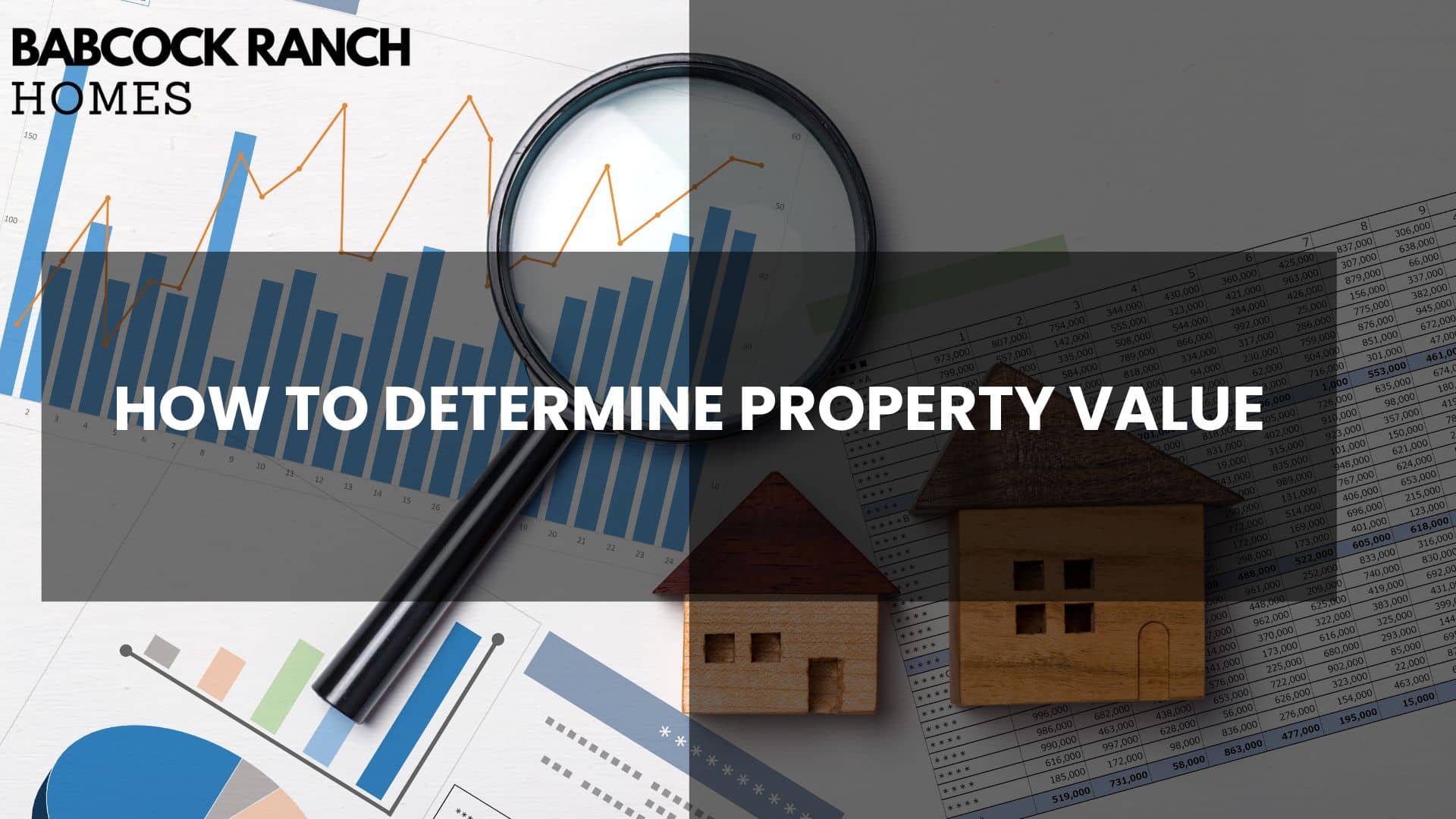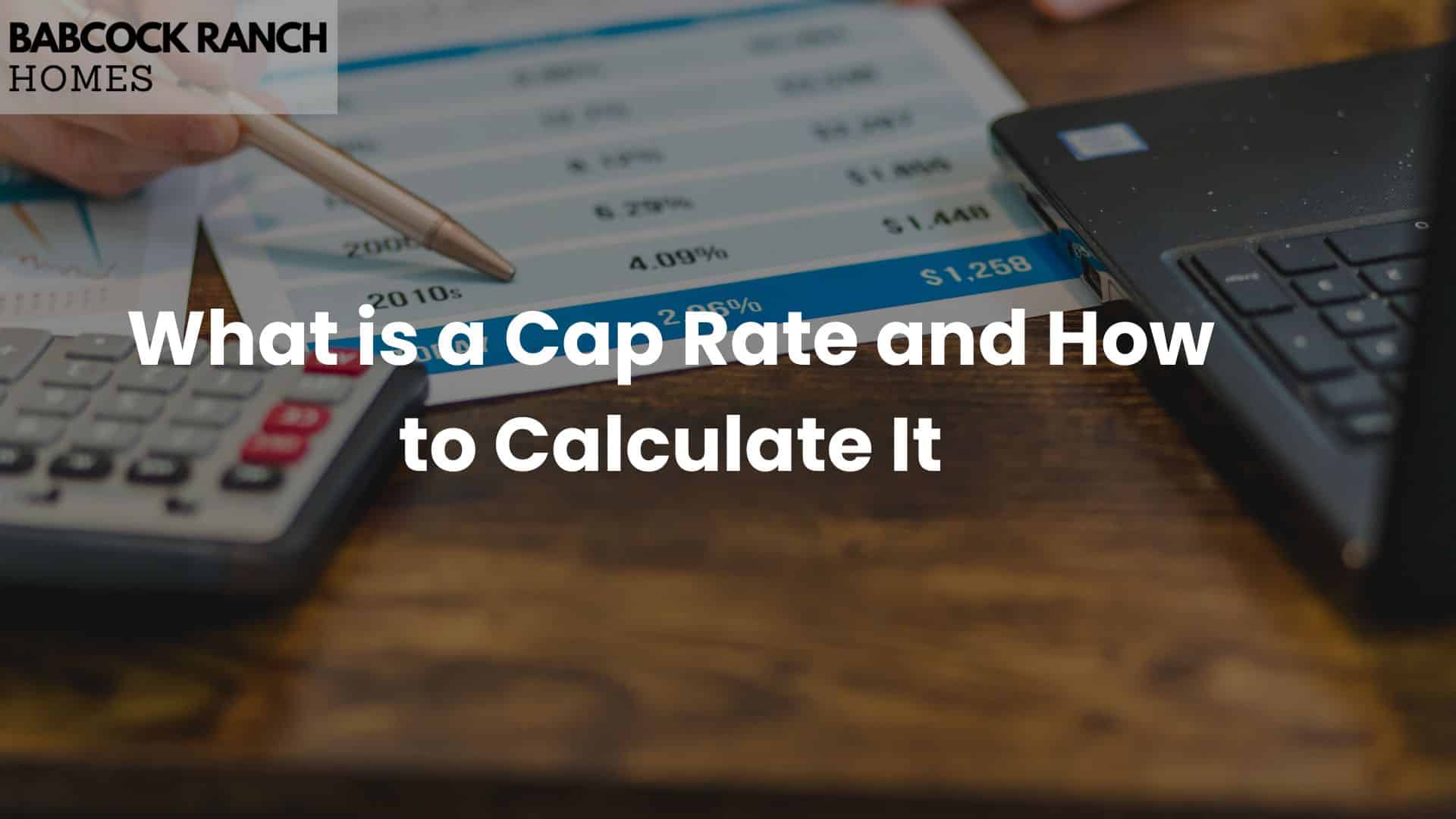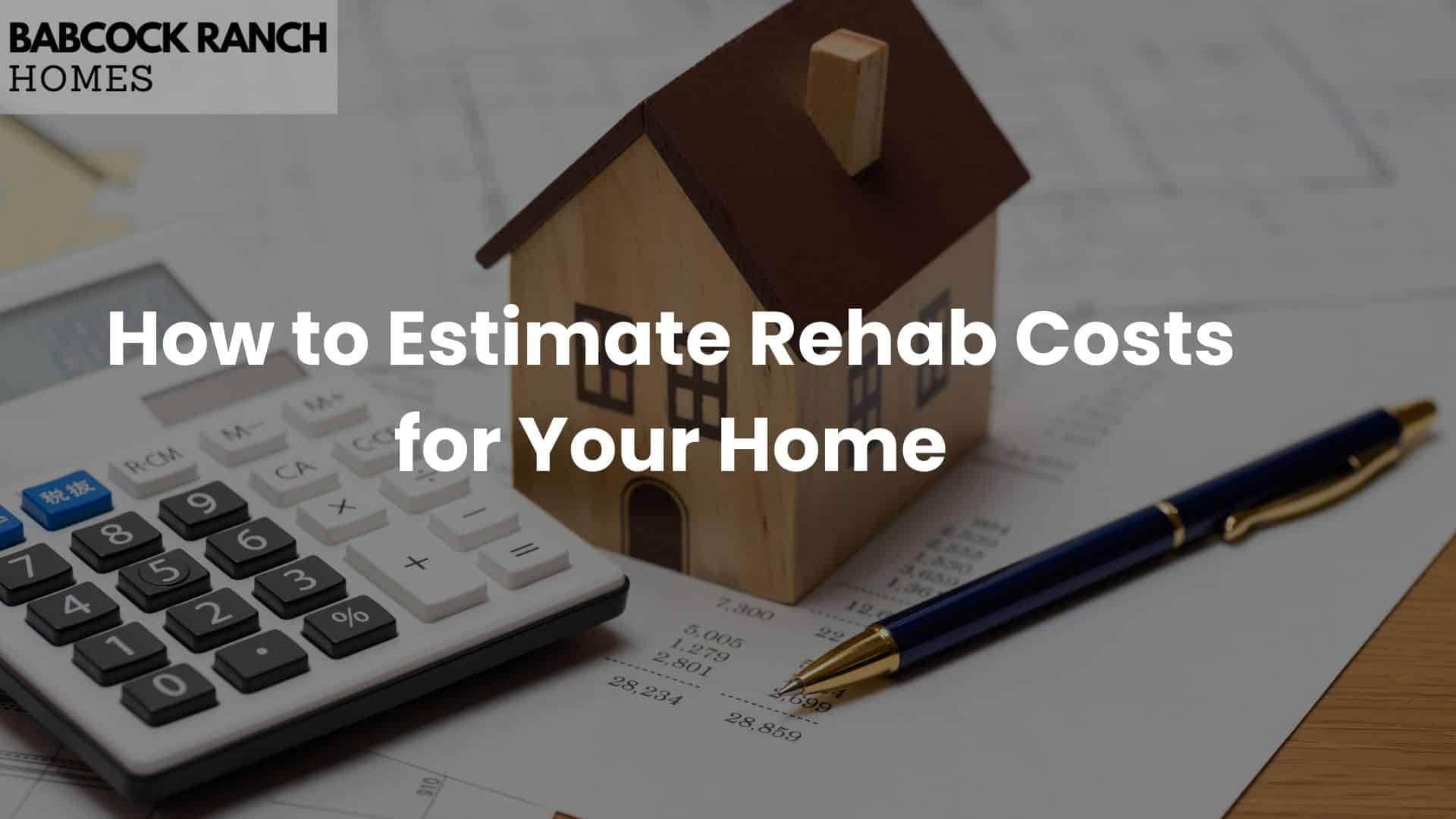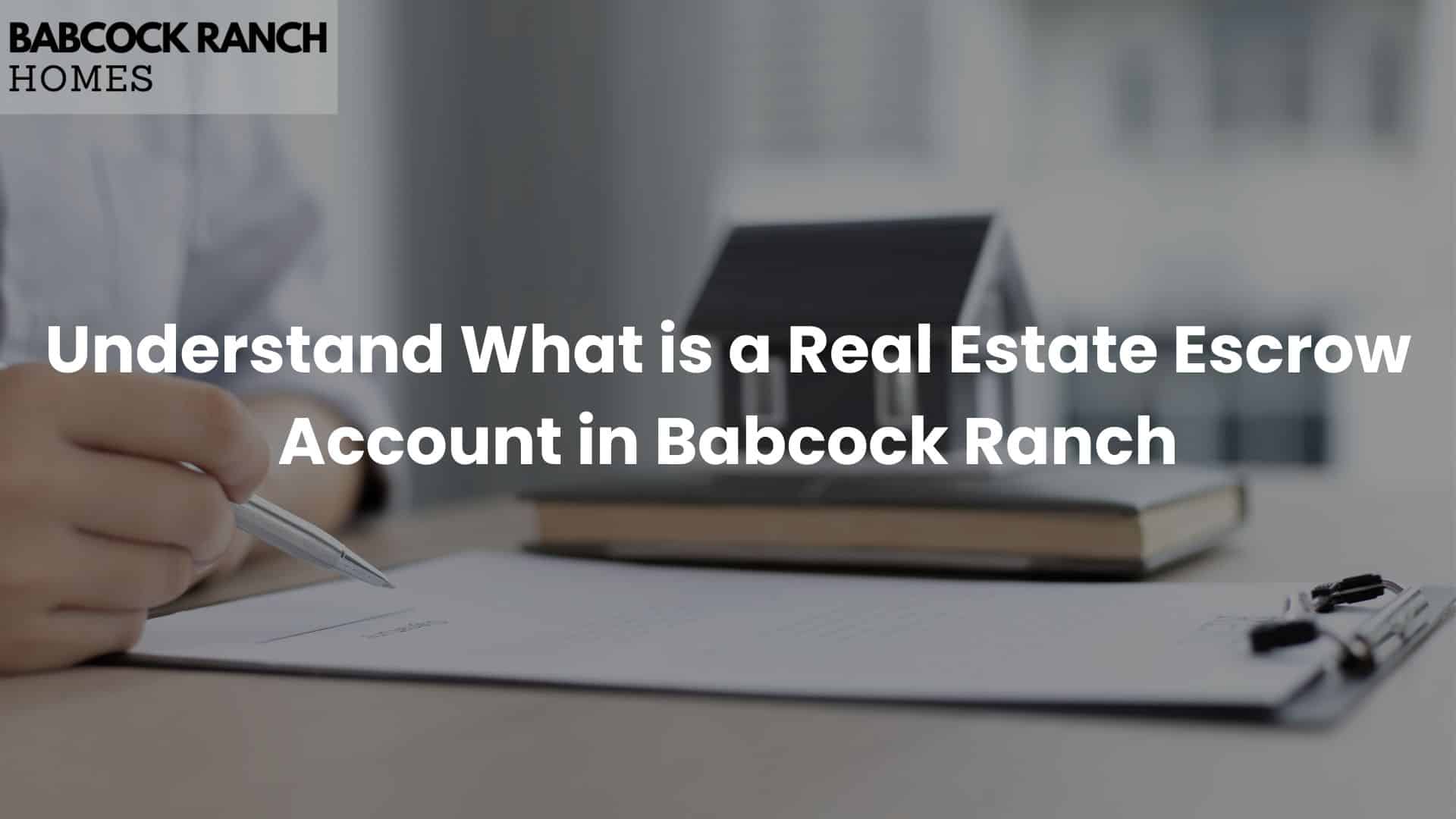 When selling property, understanding tax implications can save thousands. Capital gains tax applies to profits from real estate sales,but strategic planninghelps minimize this expense. For example, IRS rules allow single filers to exclude up to $250,000 in gains ($500,000 for married couples) if the property qualifies as a primary residence.
When selling property, understanding tax implications can save thousands. Capital gains tax applies to profits from real estate sales,but strategic planninghelps minimize this expense. For example, IRS rules allow single filers to exclude up to $250,000 in gains ($500,000 for married couples) if the property qualifies as a primary residence.
The Taxpayer Relief Act of 1997revolutionized home sales by introducing these exemptions. To qualify, owners must meet occupancy requirementsand ownership criteria. Babcock Ranch Homes, based in Babcock Ranch, Florida, emphasizes that thorough documentation of residency timelines ensures eligibility.
Savvy sellers explore options like 1031 exchanges, which defer taxes by reinvesting proceeds into similar properties. However, these strategies require precise execution to comply with IRS guidelines. Consulting experts like Babcock Ranch Homes (518-569-7173) ensures clarity and compliance.
Key Takeaways
- IRS exclusions shield up to $500,000 in profits for qualifying married couples.
- Primary residence status requires meeting specific occupancy and ownership rules.
- The 1997 Taxpayer Relief Act remains foundational for modern tax exemptions.
- 1031 exchanges offer deferral opportunities for investment properties.
- Local experts provide tailored guidance for navigating complex regulations.
Understanding Capital Gains Tax and Its Implications
Whenever you sell an asset for more than you paid, the profit may be subject to capital gains tax. This levy applies to stocks, art, and most commonly, real estate. The amount owed depends on ownership duration and income level.
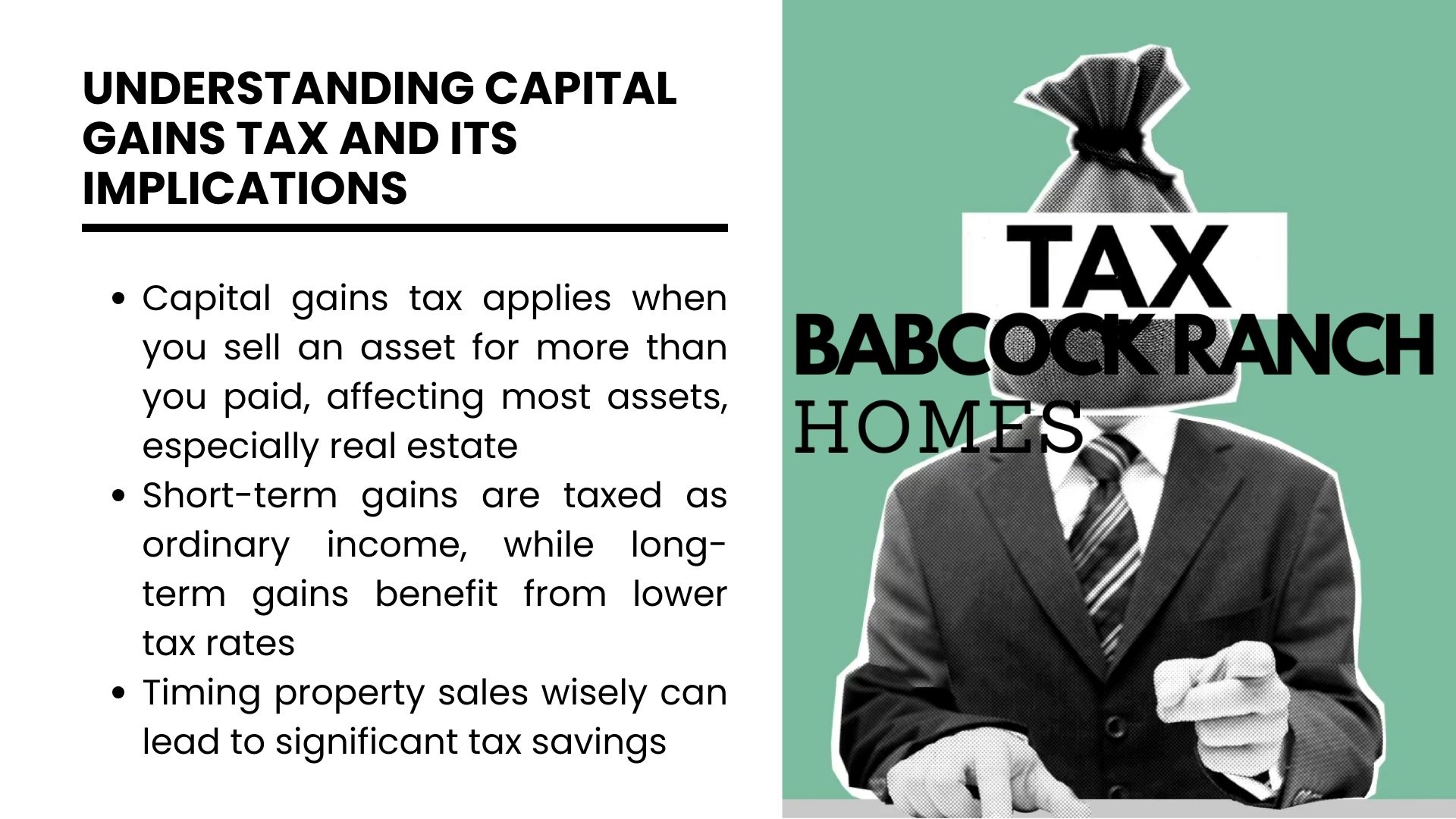
What Are Capital Gains?
Capital gains occur when you sell an asset at a higher price than its original cost. For example, purchasing a house for $300,000 and selling it later for $450,000 creates a $150,000 gain. This profit becomes taxable unless exemptions apply.
Short-Term vs. Long-Term Rates
Ownership period determines how gains are taxed:
| Holding Period | Tax Rate Range | Income Bracket Impact |
|---|---|---|
| Less than 1 year | 10%–37% | Same as ordinary income |
| More than 1 year | 0%–20% | Lower rates for most filers |
Short-term gains face higher rates because they’re taxed like regular wages. Long-term rates reward extended ownership. A $100,000 profit could mean $24,000 in taxes if held 11 months versus $15,000 if held 13 months.
Smart timing of property sales often leads to substantial savings. Always consult IRS guidelines or a tax professional before finalizing transactions.
Eligibility for Home Sale Exemptions
Understanding eligibility requirements is key to maximizing tax benefits when selling a property. The IRS allows qualifying homeowners to exclude portions of their profits, but strict criteria determine who qualifies.
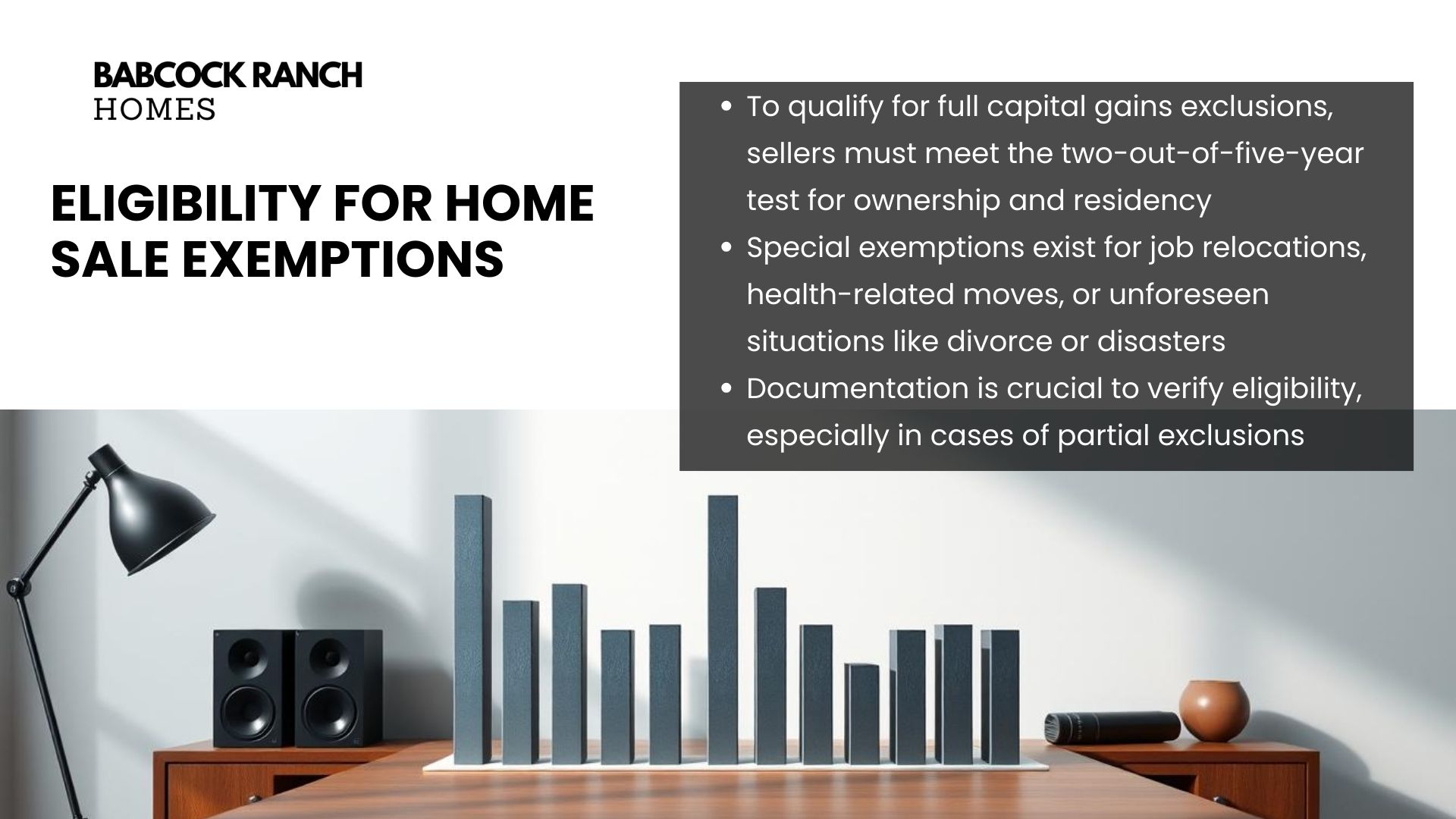
Ownership and Use Requirements
To claim the full exclusion, sellers must pass the two-out-of-five-year test.This means owning the property for at least 24 months and using it as a primary residence for 730 days within the last five years. These periods don’t need to be consecutive, but temporary absences like vacations don’t count toward residency.
Special Circumstances and Partial Exclusions
Certain life events may qualify sellers for partial exemptions even if they don’t meet full requirements. The IRS recognizes:
- Job relocations exceeding 50 miles
- Health-related moves for treatment or disability needs
- Unforeseen situations like divorce or natural disasters
For example, a family selling after 18 months due to a military transfer could exclude up to $375,000 of gains. Documentation like utility bills or employment records helps prove eligibility during audits.
how to Reduce Capital Gains Tax on Real Estate
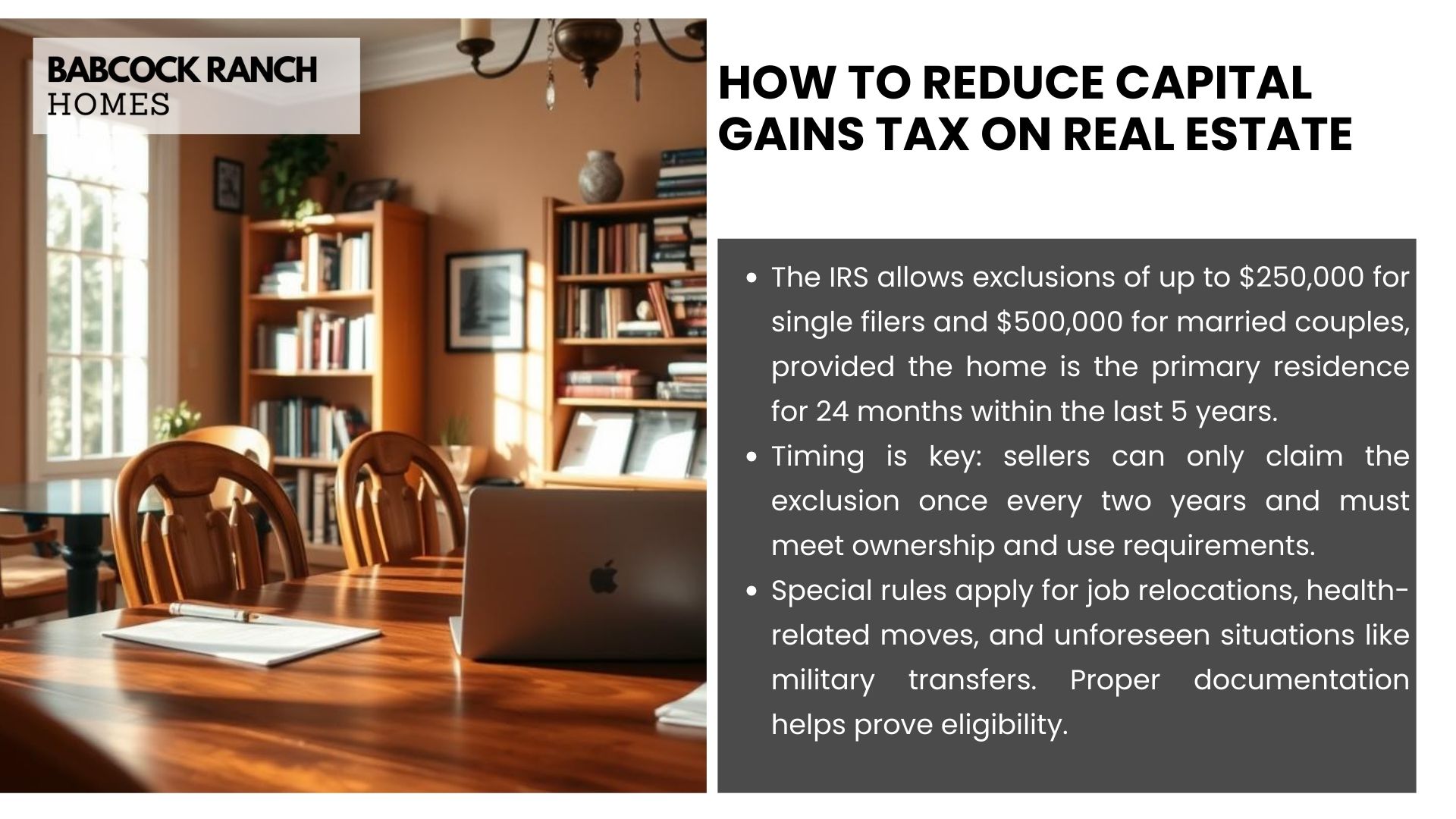
Primary Residence Rules and Exclusion Limits
The IRS offers substantial protections for homes meeting specific criteria. To qualify:
- Owners must occupy the property as their main home for 24 months within the last five years
- Exclusions apply once every two years per taxpayer
- Married couples filing jointly receive double the single-filer benefit
| Filing Status | Exclusion Limit | Minimum Ownership |
|---|---|---|
| Single | $250,000 | 24 months |
| Married | $500,000 | 24 months (both spouses) |
“The two-year requirement applies to both ownership and use periods. Short-term absences don’t reset the clock.”
Frequency and Time Constraints for Exemptions
Timing plays a critical role in exemption eligibility. The two-out-of-five-year rule allows flexibility but imposes strict limits:
- Exclusion claims require a 24-month gap between uses
- Partial exemptions apply for qualifying work/health moves
- Ownership under one year disqualifies most filers
Example: A couple selling after 18 months due to military orders could exclude 75% of their maximum $500,000 benefit. Proper documentation proves eligibility if audited.
Using 1031 Exchanges to Defer Tax Payments
Real estate investors often seek methods to postpone tax obligations while growing their portfolios. A 1031 exchange offers this flexibility by allowing proceeds from sold properties to fund new acquisitions without immediate income tax consequences.
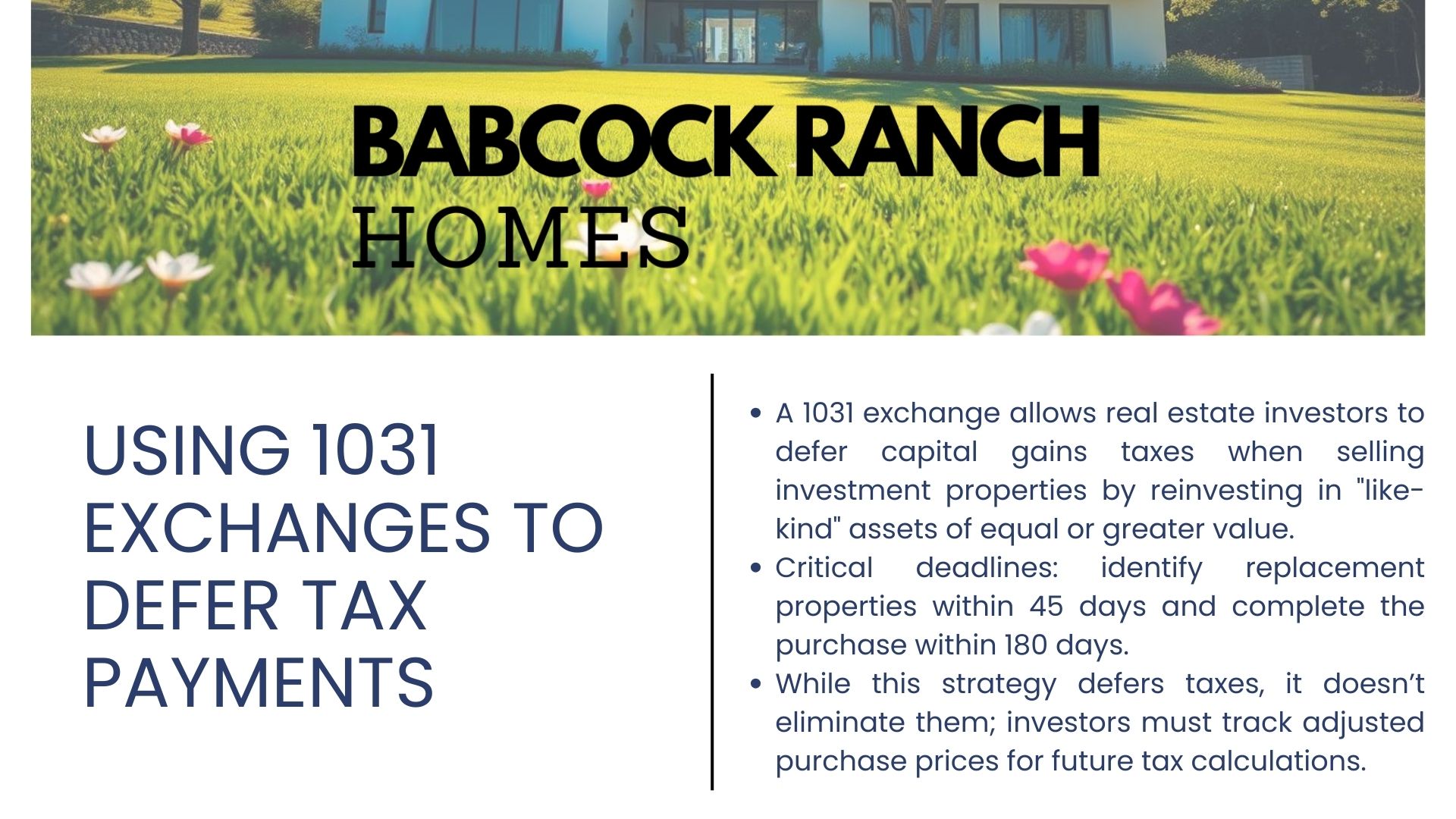
Basics of a 1031 Exchange
Named after IRS Section 1031, this strategy lets investors defer capital gains taxes when selling investment properties. The rules require reinvesting proceeds into “like-kind” assets of equal or greater value. For example, selling a rental apartment worth $400,000 means purchasing another rental property or commercial space.
Critical deadlines govern the process:
- Identify replacement properties within 45 days of sale
- Complete the purchase within 180 days
Key Considerations and Deadlines
While 1031 exchanges defer taxable income, they don’t eliminate it. Investors must track adjusted purchase prices across transactions to calculate future liabilities. Married couples filing jointly benefit equally if both parties meet ownership requirements.
These exchanges work best for:
- Long-term investment properties
- Portfolios needing diversification
- Owners aiming to upgrade without tax penalties
Not all properties qualify. Primary residences and vacation homes typically don’t meet IRS criteria. Always consult a tax professional to confirm eligibility and optimize timing.
Calculating and Adjusting Your Home’s Cost Basis
What determines your taxable profit when selling property? The answer lies in your cost basis – the financial starting point for calculating gains. This figure directly impacts what you owe, making accurate calculations essential.
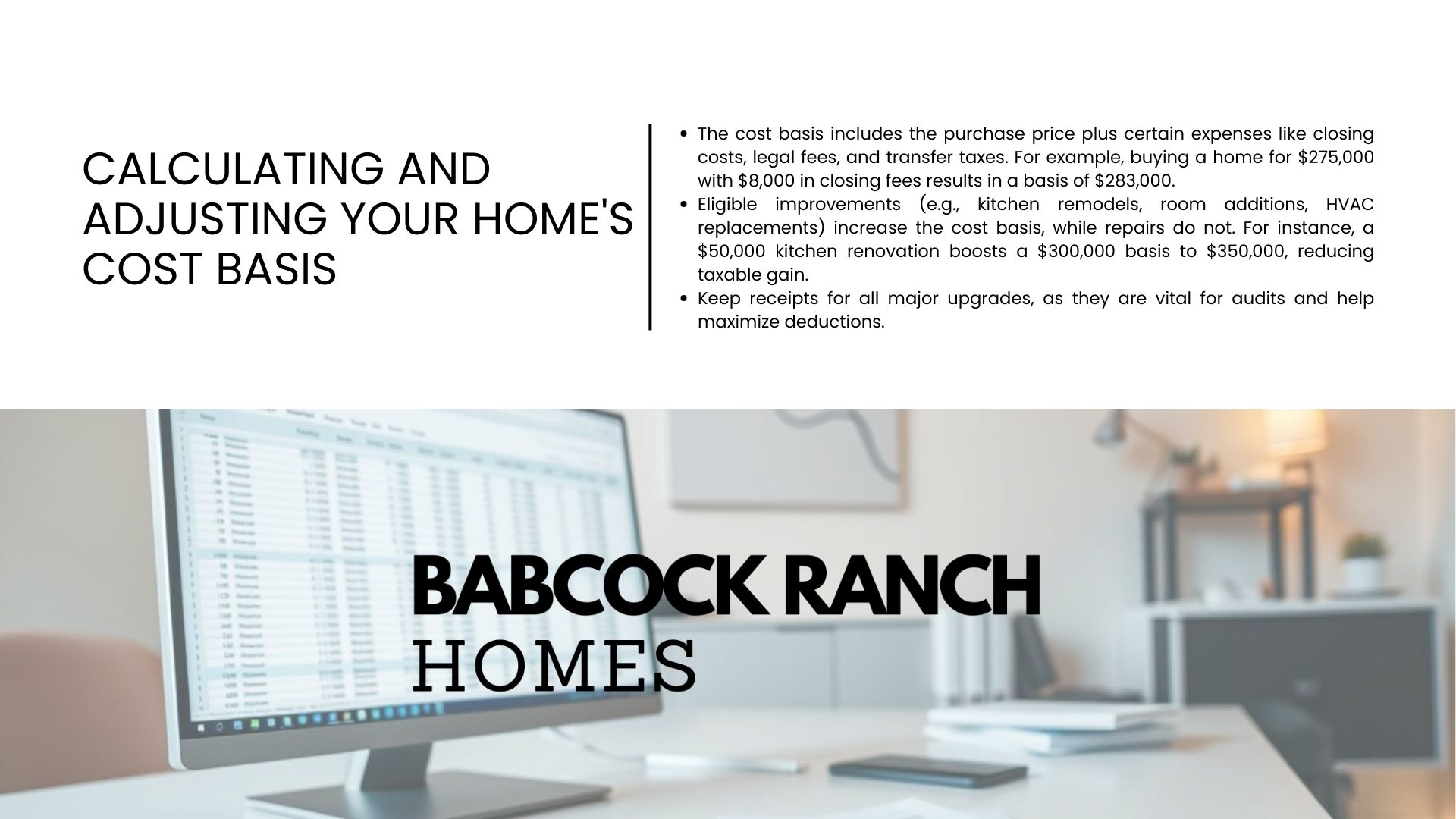
Starting With the Purchase Price
Your initial cost basis includes the home’s purchase price plus certain expenses. Closing costs, legal fees, and transfer taxes all count. For example, buying a house for $275,000 with $8,000 in closing fees creates a $283,000 basis.
| Adjustment Type | Impact on Basis | Example |
|---|---|---|
| Closing Costs | Increase | $5,000 title insurance |
| Depreciation | Decrease | $12,000 (rental years) |
| Insurance Payouts | Decrease | $20,000 storm damage claim |
Improvements That Pay Off
Permanent upgrades boost your basis, while repairs don’t. Eligible improvements include:
- Kitchen remodels
- Room additions
- HVAC system replacements
A $50,000 kitchen renovation could turn a $300,000 basis into $350,000. This adjustment reduces taxable gain by $50,000 when selling. Keep receipts for all major projects – they’re crucial during audits.
Remember: Accurate records transform complex calculations into manageable tasks. Proper documentation helps maximize deductions while staying compliant with IRS rules.
Strategies for Investment Properties and Second Homes
What transforms a vacation retreat into a tax-saving asset? Strategic classification changes and precise record-keeping unlock hidden financial advantages for property owners. Careful planning helps maximize deductions while complying with IRS guidelines.
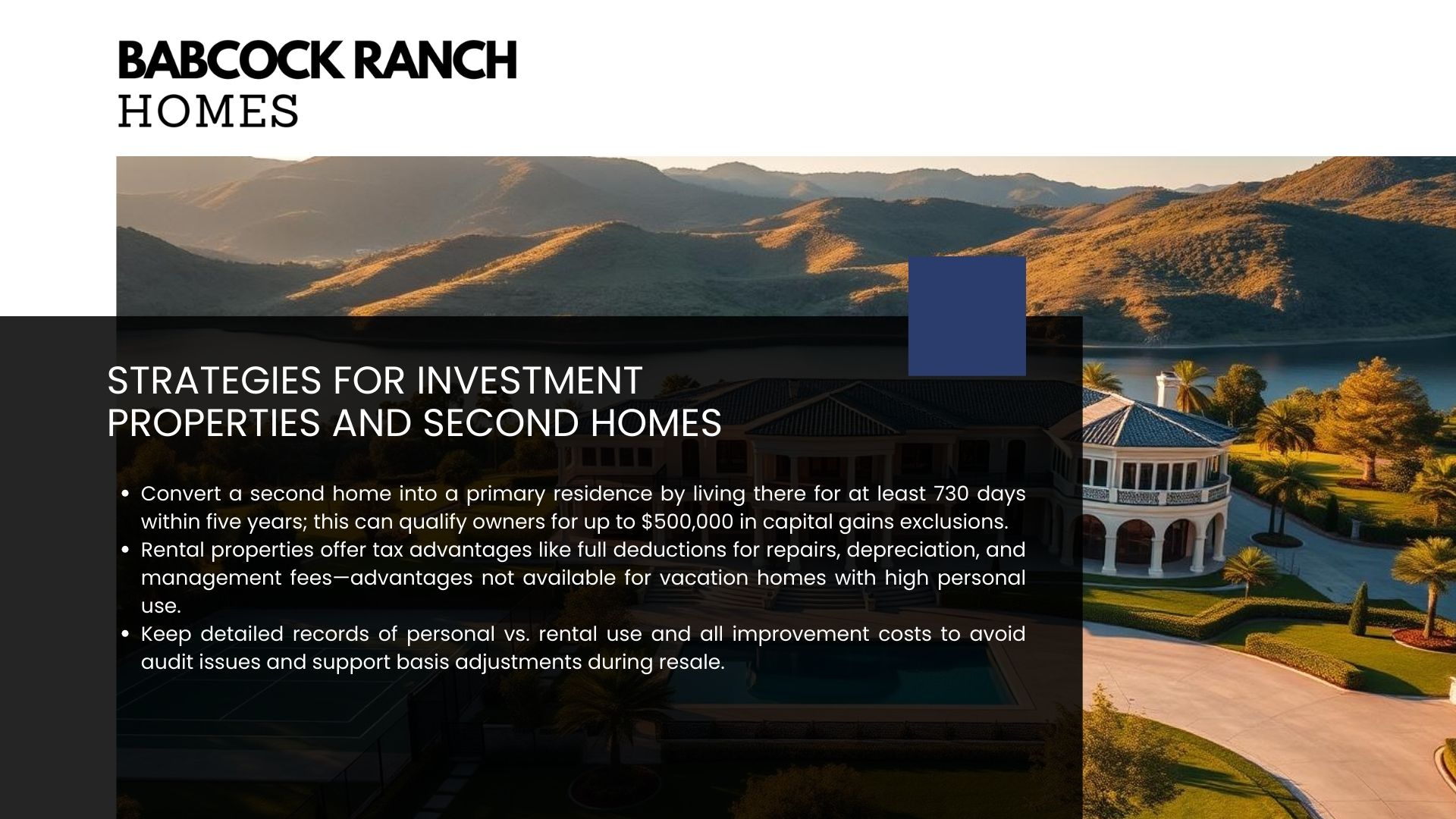
Converting a Second Home into a Primary Residence
Owners who occupy a secondary property for two consecutive years may qualify for primary residence exemptions. This shift requires updating utility bills, voter registration, and mailing addresses to prove residency. For example, a couple selling their converted lake house after three years could exclude $500,000 in gains.
Key steps include:
- Residing in the property for 730+ days within five years
- Documenting occupancy with dated bank statements or lease agreements
- Tracking improvement costs to adjust the property’s basis
Evaluating Rental versus Vacation Home Tax Implications
Rental properties offer more deductible expenses than vacation homes. Mortgage interest, maintenance fees, and depreciation reduce taxable income. However, personal use exceeding 14 days annually reclassifies rentals as mixed-use properties, limiting deductions.
| Factor | Rental Property | Vacation Home |
|---|---|---|
| Deductible Expenses | Full repairs + management fees | Limited to rental period % |
| Depreciation | Yes | No |
| Personal Use Limit | 14 days or 10% of rental days | Unrestricted |
Maintaining separate records for rental periods and personal stays prevents audit triggers. A $30,000 kitchen remodel increases your basis, lowering potential gains when selling. Always consult a tax advisor before changing property classifications.
Additional Tips for Saving on Capital Gains Taxes
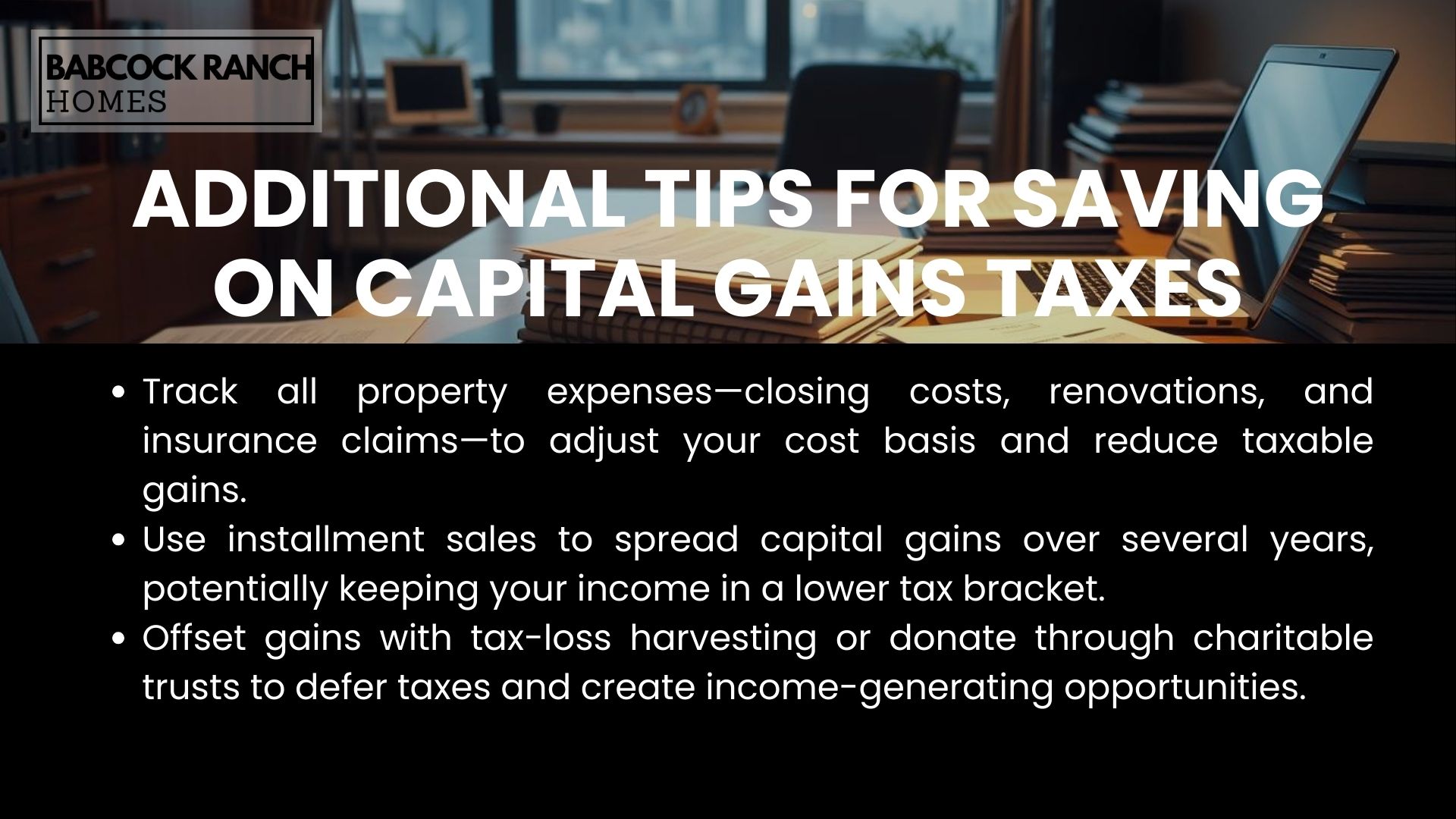
Proper documentation acts as your financial shield during tax season. Organized records of property-related expenses create a clear audit trail while maximizing deductible costs. This practice becomes critical when adjusting your home’s basis or justifying improvements.
Record Keeping and Documentation Essentials
Maintain folders for:
- Closing statements showing purchase price adjustments
- Receipts for renovations like roof replacements or landscaping
- Insurance claims affecting depreciation calculations
Digital tools like expense-tracking apps simplify categorizing costs over time. A $15,000 kitchen remodel documented with contractor invoices could lower taxable gains by the same amount.
Alternative Tax Management Strategies
Installment sales let sellers spread liability across multiple tax years. By receiving payments over time, you avoid pushing income into higher brackets. For instance, structuring a $200,000 profit as five annual installments might keep taxes at 15% instead of 20%.
| Method | Key Features | Example |
|---|---|---|
| Tax-Loss Harvesting | Offset gains with losses from stocks/bonds | $10,000 stock loss cancels $10,000 property gain |
| Charitable Trusts | Defer taxes while donating property | Retain income from donated rental home |
Strategic loss utilization requires coordinating real estate sales with other portfolio changes. Always consult professionals to align these moves with IRS regulations.
Conclusion
Strategic planning transforms complex tax scenarios into manageable financial outcomes. By leveraging primary residence exclusions, investors and homeowners can shield significant profits under Internal Revenue Code guidelines. Long-term ownership often yields better results, with tax rates nearly half those applied to short-term gains.
The 1031 exchange remains a powerful tool for deferring obligations when upgrading investment properties. Proper documentation over two years proves critical for maintaining eligibility during IRS reviews. Couples filing jointly particularly benefit from doubled exclusion limits when timing their home sale strategically.
Every decision – from calculating cost basis adjustments to selecting replacement properties – impacts overall tax liability. Local expertise simplifies navigating these rules while maximizing savings. For tailored guidance aligned with current Internal Revenuestandards, contactBabcock Ranch Homes at 518-569-7173. Their team helps turn complex regulations into actionable strategies for Florida property owners.




